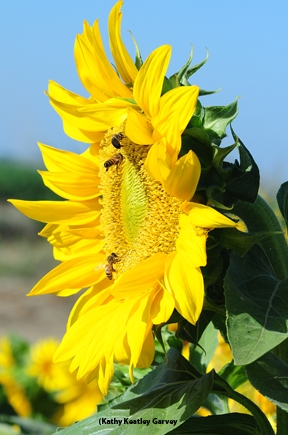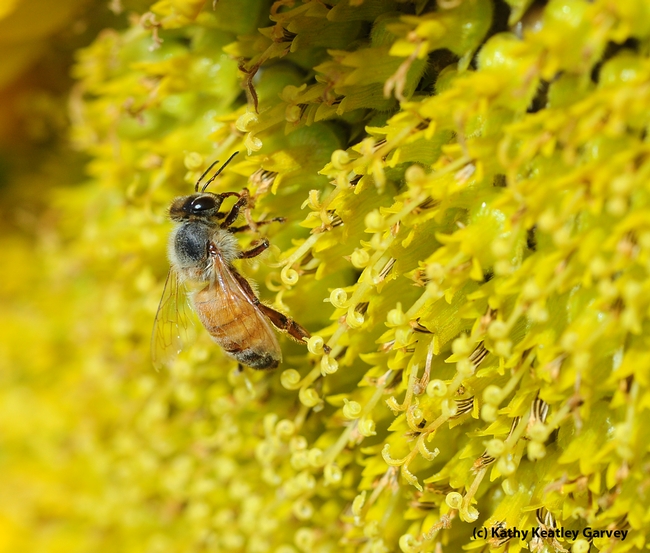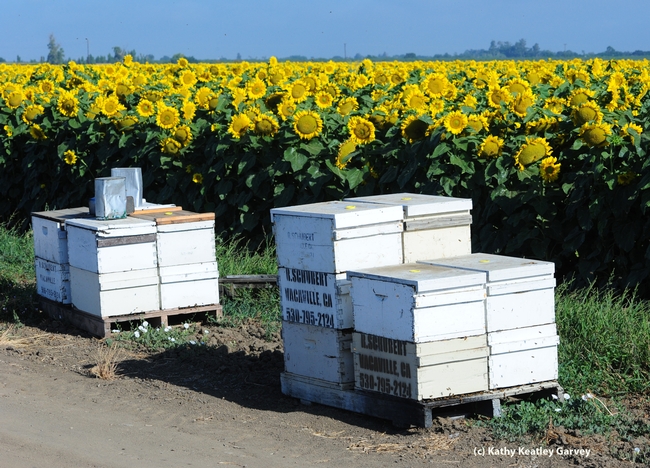
Their golden heads turned toward the sun, their fringed petals aglow, sunflowers set an amicable scene in a world sometimes darkened by strife and sorrow.
Take, for example, the sunflower fields along Pedrick Road in Dixon, Calif. They are spectacular. A Vincent Van Gogh painting come to life.
And, the bees make it happen.
The non-native honey bees (Apis mellifera), brought to America in 1622 by the European colonists, and the native sunflower bees (Svastra spp.) are everywhere.
It was not always like that. The sunflower bees were here first.
In fact, Native Americans began cultivating the sunflower (Helianthus annuus), a native American plant, 3,000 years ago. When the honey bee arrived, they called it "The White Man's Fly."
The Native Americans made "yellow dye from the petals and purple dye from the immature seeds" of sunflowers, according to What's That Crop? authors Janet Byron, managing editor of California Agriculture, and science and environmental writer Robin Meadows.
They place the value of California's 42,000 acres of sunflowers in the Central Valley at $9.5 million a year.
"Most of California’s sunflower crop is grown for oil, and it takes about 100 pounds of seed to make 40 pounds of oil," they wrote. "The remaining protein-rich meal is used in livestock feed. Besides producing sunflower seeds for snacking and cooking oil, the state also supplies most of the planting seeds sown by sunflower farmers nationwide."
You can follow them on their Facebook page, "What's that Crop?"
Latest statistics released in March of 2012 by the National Agriculture Statistics Service (NASS) of the U.S. Department of Agriculture, indicated that "California farmers were expecting to plant 39,000 acres of sunflowers for oil, down 2 percent from last year, and 7,000 acres of non-oil sunflowers, up 75 percent from 2011."
The annual NASS forecasts are based on a survey of more than 2500 California farmers during the first two weeks of March.
Attached Images:


